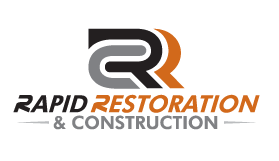10 Tips When Water Damage Hits
Water is a powerful element. While critical to meeting basic human needs, water can also be unpredictable, relentless, and destructive. This becomes alarmingly apparent in the face of a natural disaster such as the recent Hurricane Florence. North Carolina Agriculture Commissioner, Steve Troxler, said in a statement, “This was an unprecedented storm with flooding expected to exceed that from any other storms in recent memory.” Property damage is estimated at $17 billion to $22 billion, according to Moody’s Analytics, making it among the 10 costliest hurricanes. And nearly 40 inches of rain fell over North Carolina as experts predicted an additional 2 to 5 inches of rain expected in the Carolinas and Virginia.
To help facility executives navigate the tricky aftermath of significant water damage, this article outlines 10 best practices for water remediation. These practices should be the basis for water remediation within an overall strategic disaster plan, designed to arm facility managers with the strategies, tactics, and critical information needed to respond to emergencies in a timely manner. In addition to following best practices, it is important for facility managers to familiarize themselves with their flood insurance policy and establish a trusted relationship with the insurance company to efficiently and seamlessly assess water related damage and begin the remediation process.
Based on 30 years of experience, these tips will help expedite the remediation process to ensure the safety and security of all those involved.
Best Practices For Water Remediation
1. The most important factor, when faced with water damage, is safety. Align yourself with appropriate local resources including fire and police, mechanical contractors, insurance, utility, and restoration companies and alert immediately.
2. Familiarize yourself with water shut-offs for quick access and label accordingly. Swift action is critical to minimize loss, mitigate risk, and protect assets.
3. Electricity presents the greatest danger. Look for water coming through light fixtures or electrical boxes.
4. Immediately shut off the following if affected by water: electrical box, circuit breaker box, and meter panel. Once the electricity is shut down, cord off the affected area with caution tape.
5. Identify the source of water damage. Assess degree of contamination to determine remediation plan. Be aware of associated health effects depending on the contamination level to update emergency personnel when they arrive on-site.
6. Identify potential environmental hazards such as lead or asbestos. Prolonged exposure to asbestos and/or lead can cause serious illness and significant health problems.
7. Relocate or protect valuable contents from affected areas including electronics, computers, furniture, artwork, files and documents, clothing, etc.
8. Have basic items on hand such as plastic garbage bags for use in covering items noted above and for the disposal of items, caution tape, duct tape, and basic hand tools.
9. Contain and/or isolate the area(s) of damage to protect staff and on-site emergency personnel. Create a plastic barrier around the perimeter of the contaminated area and cord off with caution tape.
10. Begin mitigation with restoration partner on-site to preserve, secure, and restore your property to good working order.
Whatever the source — natural disaster, leaking pipe, backed up sewer, or broken sprinkler line, water can wreak havoc on your property, putting your most important assets in danger. Having a strategic disaster plan in place, a partnership with a trusted restoration company and familiarity with the flood insurance policy is paramount to long-term success. Taking the time to review these best practices will help ensure swift action when needed, to get your property in good working order once again.
For more information contact Rapid Restoration & Construction.

 10201 W. 43rd Ave
10201 W. 43rd Ave
 303-412-9999
303-412-9999
